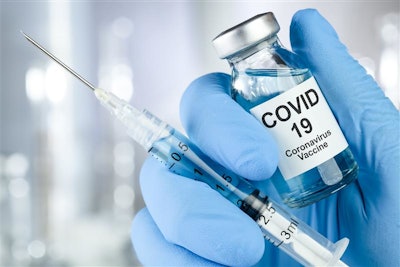
Never before has the importance of a resilient supply chain been more obvious than during 2020. Supply chains were thrown for an unforeseen loop when the Coronavirus disease (COVID-19) prompted global lockdowns. The disruption spared no industry or vertical and impacted everything from automotive, electronics and apparel to pharmaceuticals and construction. One study found that 94% of Fortune 1000 companies saw supply chain disruptions from COVID-19.
As supply chains across the board bounce back from the pandemic, and organizations work to improve on their associated technology, visibility and processes, another important supply chain is in the spotlight: the supply chain associated with vaccine distribution. With multiple touchpoints throughout the supply chain, it’s absolutely vital to public health – and the long-awaited return to normal – for there to be every effort made for full visibility and peak efficiency.
Data holds the key to a successful vaccination campaign
In many ways, data has had its moment to shine this past year. Data uniquely tells a story in a way that observations or first-hand experience cannot. In those early weeks and months of the pandemic, data from around the world painted a picture of how quickly the virus was spreading. “Flattening the curve” was all about keeping a critical eye on emerging data of confirmed cases. And with every phase of a company’s vaccine trial, science communities waited patiently for the data to make evident how efficacious the vaccine was outside of a controlled laboratory environment.
Reliable and insight-rich data is a critical component of the vaccine rollout as well, not just understanding how quickly inoculation is taking place, but also having a complete and real-time understanding of where vials are located and when deliveries are completed or delayed. Accurately capturing this data should be a top priority as vaccine doses make their way from production to distribution points and eventually into the arms (literally) of awaiting vaccine recipients when the shot is administered.
The COVID-19 vaccine rollout will be made successful with guaranteed end-to-end shipment traceability, which begs the question, how can data capture be improved upon?
Manual processes weaken the health of supply chains
Relying on manual data in supply chain management poses a significant liability. It is tedious, time-consuming and repetitive, not to mention the fact that humans are error-prone and likely to make mistakes, even with great care and the best of intentions.
Therefore, it’s important to reduce the amount of manual data entry at each touchpoint of the vaccine journey. This ensures companies have an accurate view of how distribution is going. Blind spots in the supply chain can also be eliminated when the right data is available, further reducing inventory loss or stock discrepancies. If manual entry introduces risk into the supply chain for COVID-19 vaccines, then it’s in all of our best interest for an alternative method of data capture to be employed.
There’s a range of technology available today to do just that. Barcode scanning and optical character recognition (OCR), as an example, are being embraced in warehouses of every industry, along with hospitals, pharmacies and doctors’ offices. These technologies present a good use case for the tracking of vaccine shipments through the supply chain.
During the packaging and loading process, barcodes and serial numbers can be scanned to confirm pickup. Other information such as drivers’ licenses, vehicle numbers or license plates can be scanned to associate them with the vials they’re carrying. This digital process can be repeated upon delivery as well. Plus, with the ubiquity of mobile devices and smartphones, companies can choose to adopt a bring-your-own-device (BYOD) culture, empowering staff with the right tracking tools without the need for costly investments in new hardware or user training.
Vaccine administration made safer with simplified data capture
The idea of contact tracing is something we’ve all become familiar with. When there is a confirmed case of the virus, known close contacts are instructed to quarantine if they’ve interacted with the person during the window of possible transmission.
Now, there’s contact tracing of a different kind that barcode scanning and OCR technology can assist with, and that’s the documentation of a contact’s data when they go to take the vaccine, ultimately tracing the vaccine from its original production to final destination. Medical staff can use scanning technology – not manual entry – to capture the data on identification cards, linking that individual to the unique barcode on the exact vaccine dose they receive.
Data will strengthen the vaccine supply chain
In continuous support of the vaccine rollout, companies must enable digital tools to track shipments at every step in the supply chain. By integrating data capture into an existing logistics, companies can track vaccines more accurately and identify blind spots in the supply chain process. In doing so, they’ll be equipped to quickly address delays or issues that arise, and be an even more positive force for good as we look toward a post-pandemic normal.




















